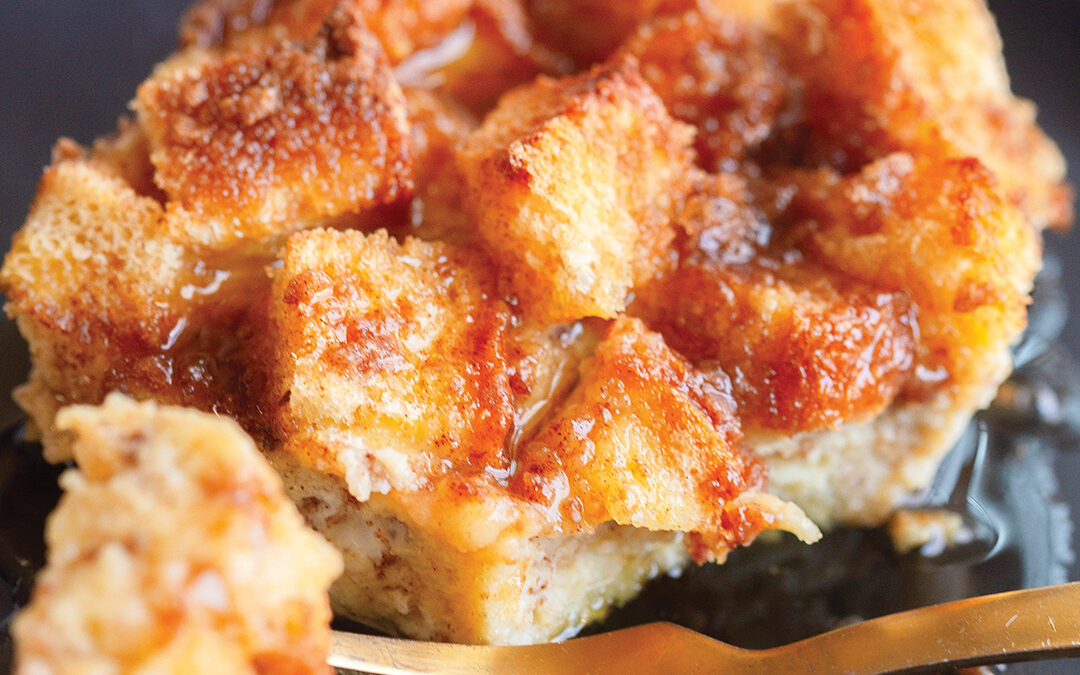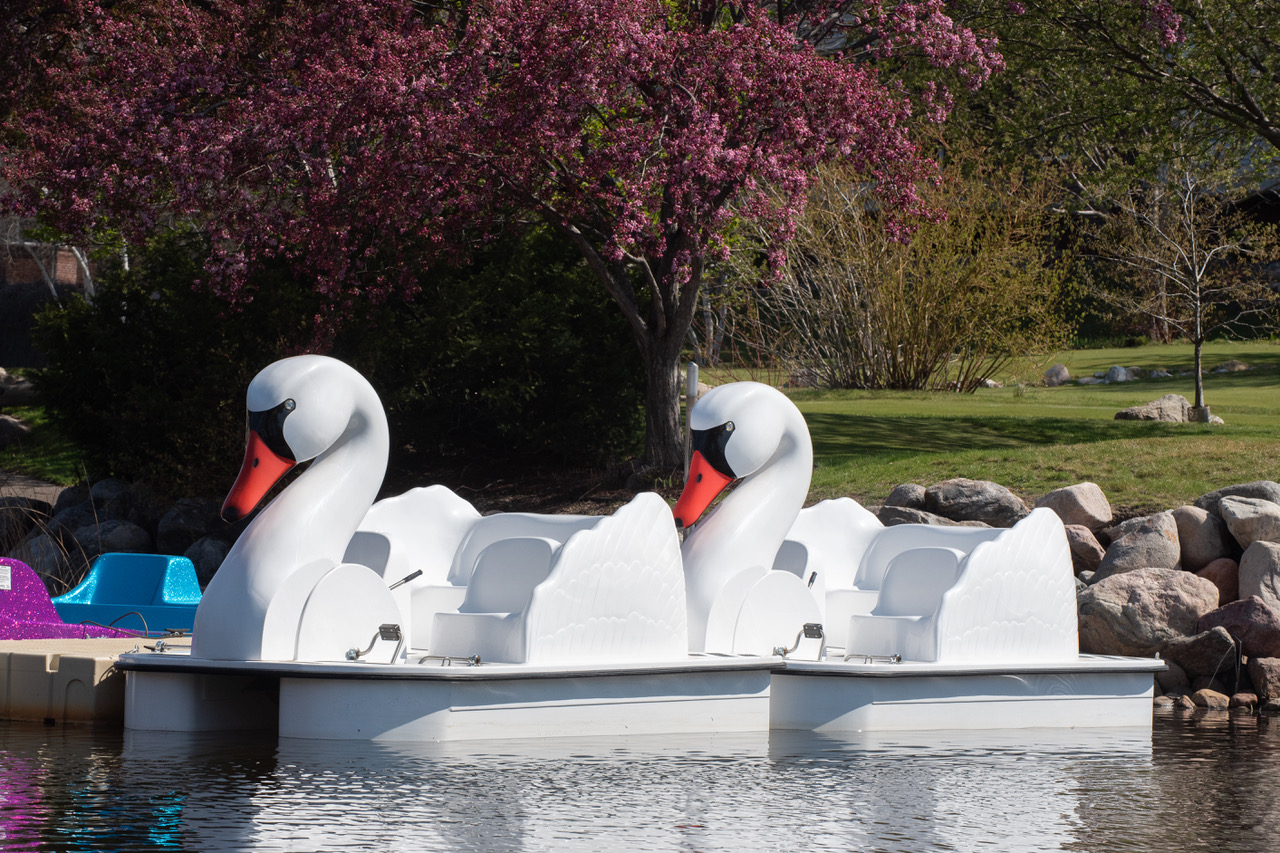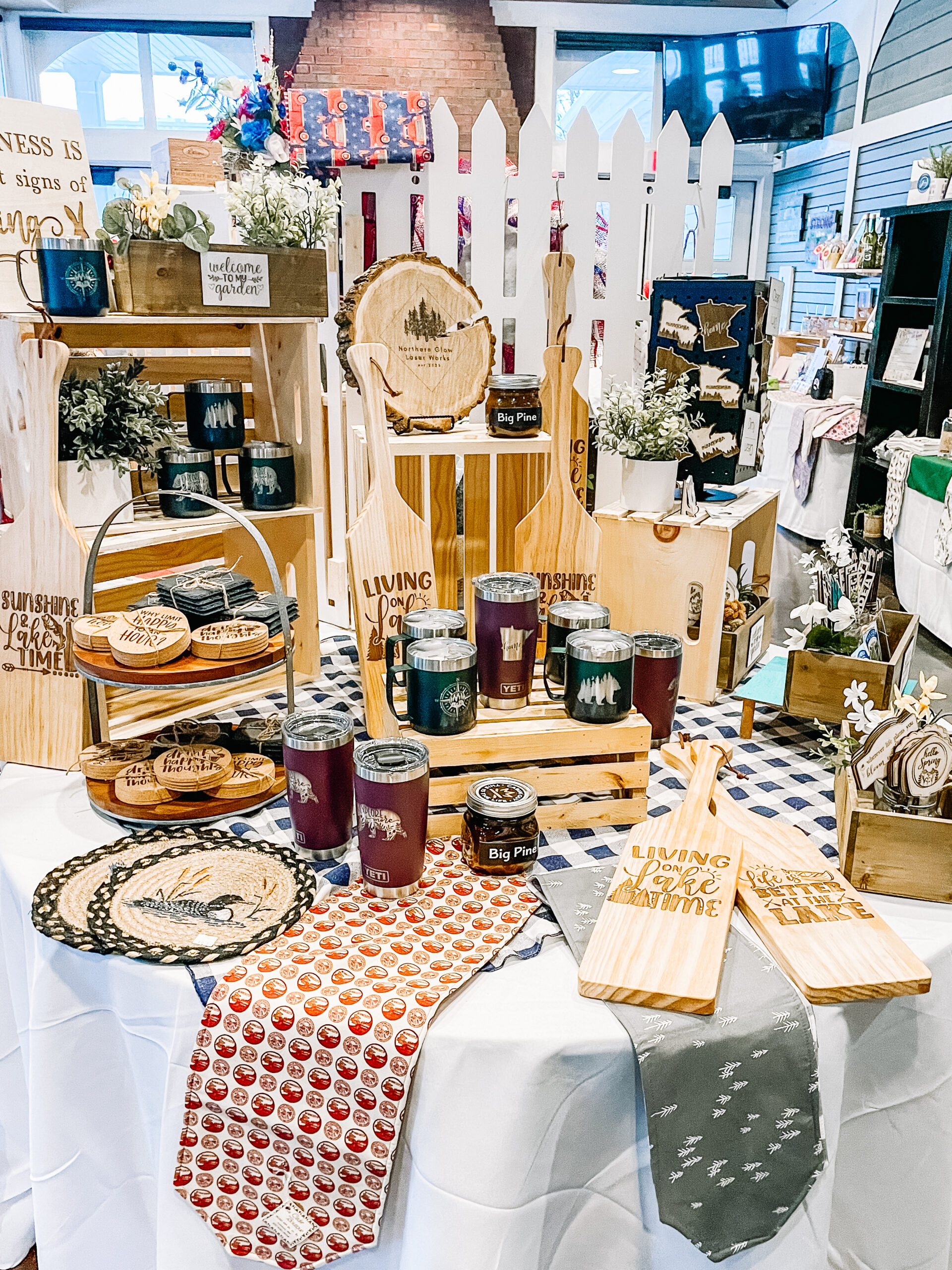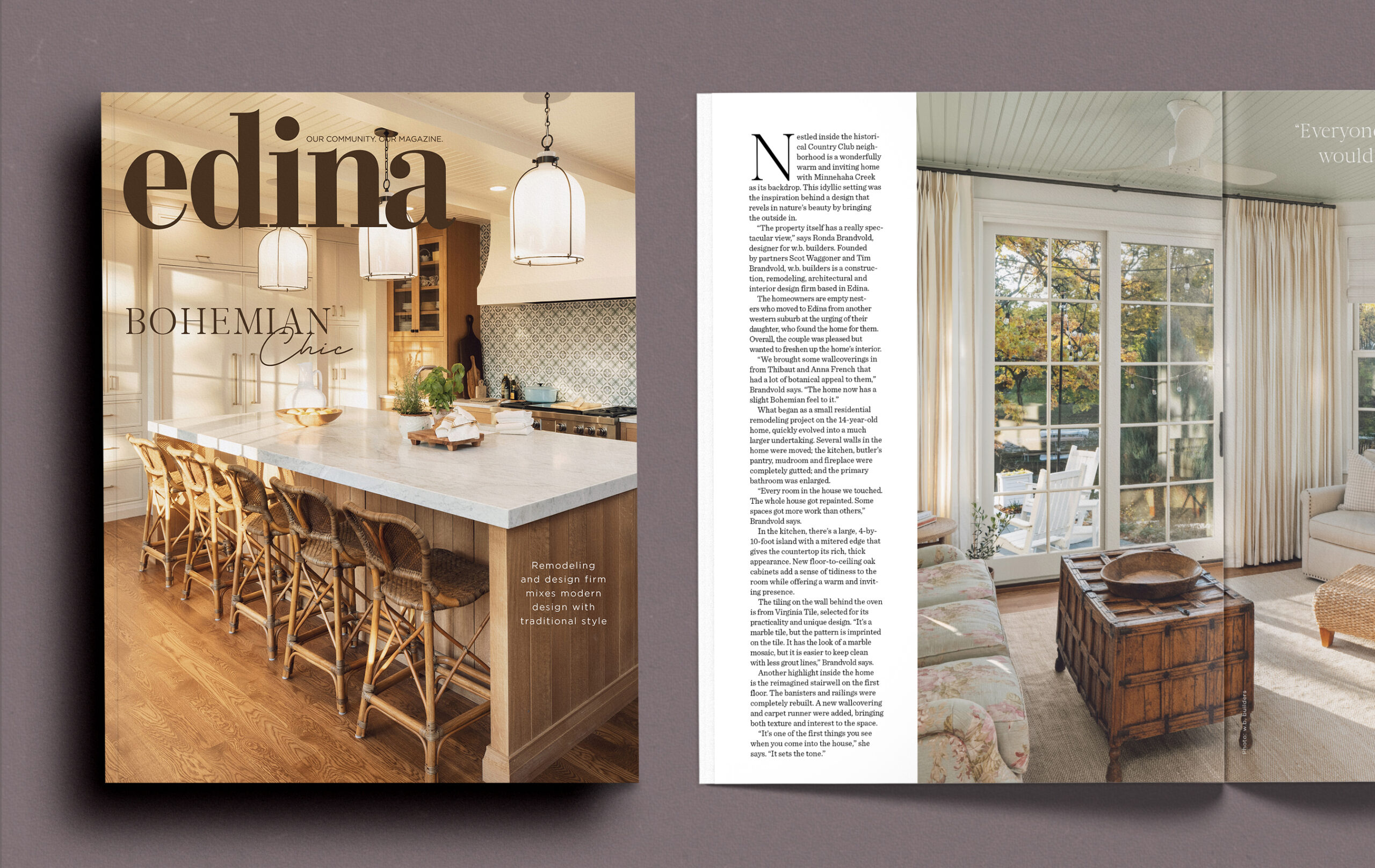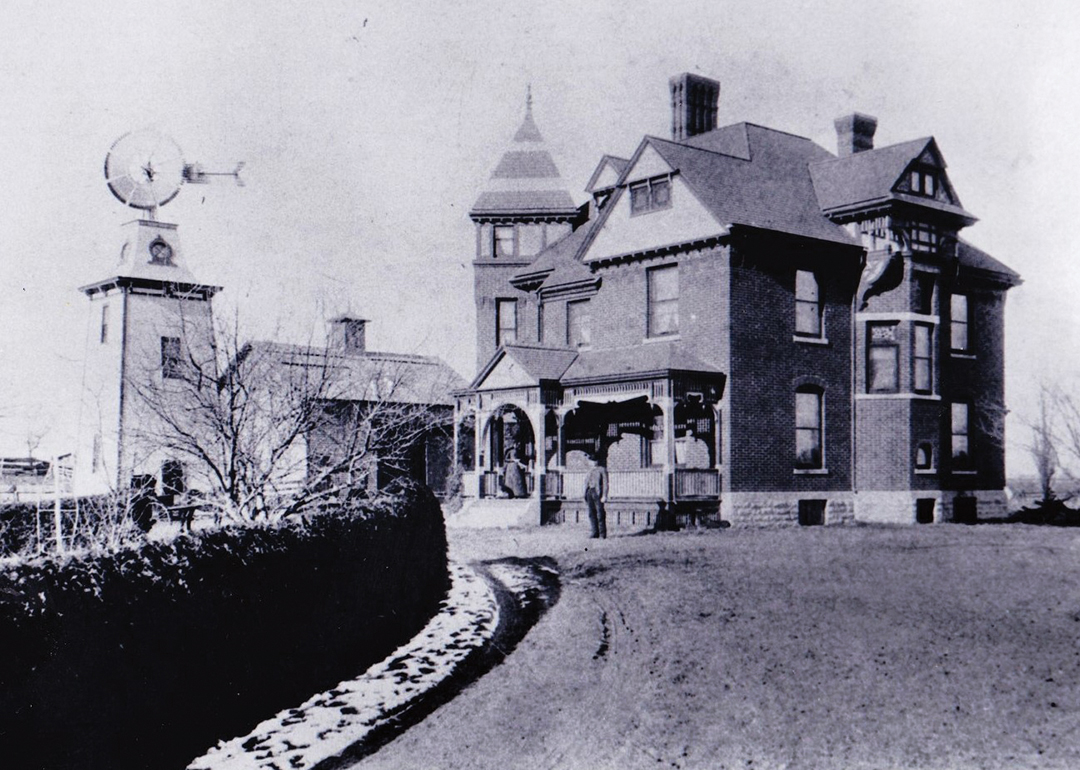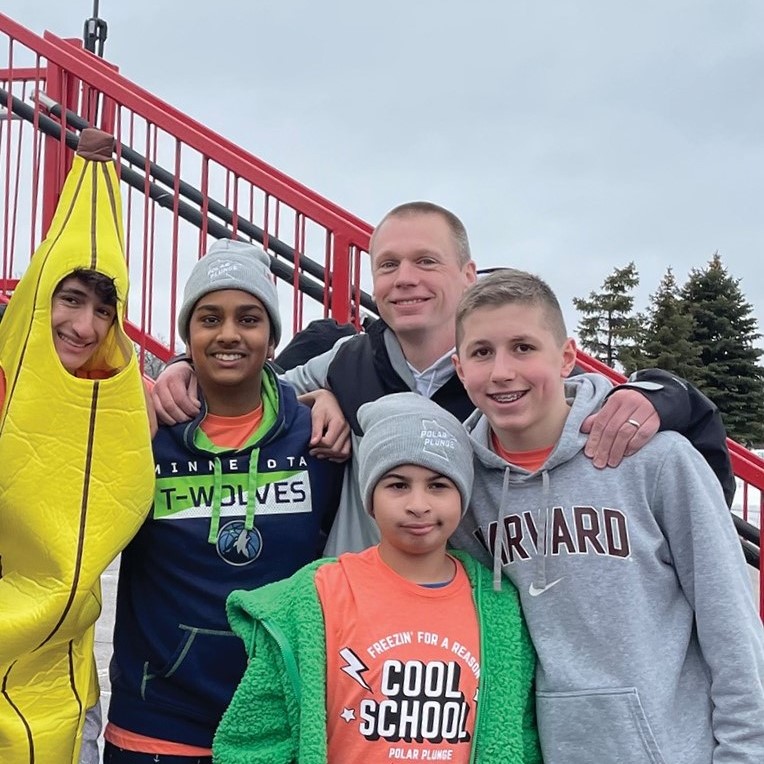
Photos: Chris Emeott
In his restaurants, chef Gavin Kaysen brings to life his values of connection and restoration.
From the age of 16, Gavin Kaysen knew he wanted to be a chef. However, it was actually cooking and baking with his grandmother Dorothy at the age of 7 that first sparked a love for being in the kitchen.
“It was the first time I recognized the power of food and how it could bring people together,” Kaysen says. “As a young kid, I saw just how busy everyone’s life was. But when people would go to have dinner, everybody would kind of stop and go to the table. And so that was really kind of a pivotal experience for me.”
Kaysen’s grandmother was the first person to teach him how to cook; that time with her in the kitchen was foundational, as Kaysen discusses in his 2022 cookbook, At Home. And that value of pausing in the midst of life’s busyness and gathering people around a table has continued to be a driving force in Kaysen’s life.
Kaysen grew up in Bloomington and now resides in Edina, but in between he lived everywhere from Vermont (while at the New England Culinary Institute) and Napa Valley to Lausanne, Switzerland; London; San Diego and Manhattan. He was 20 when he left the states and headed to Switzerland for an internship at Auberge de Lavaux, working under chef Jackie Vuillet.
While in Switzerland, Kaysen’s schedule was grueling and all-consuming. He worked five days a week, from 7 a.m. to at least midnight each day, with just a two-hour break each afternoon. Yet, he looks back with so much fondness on the six months he spent at Auberge de Lavaux—another pivotal, foundational experience.
Part of what made this season of life so significant, other than the obvious skills he gained in the kitchen (and the fact that he met his wife, Linda, while taking French classes at the university), is that on his two days off each week, Kaysen traveled all over Europe, particularly in the Mediterranean. He not only discovered new landscapes and languages, but also new foods, flavors and cultural practices.
Something that stands out in all the stories he tells from that time in his life? The way he witnessed people coming together over food—dropping everything and truly pausing, sometimes for hours, to enjoy the flavors and the time with each other.
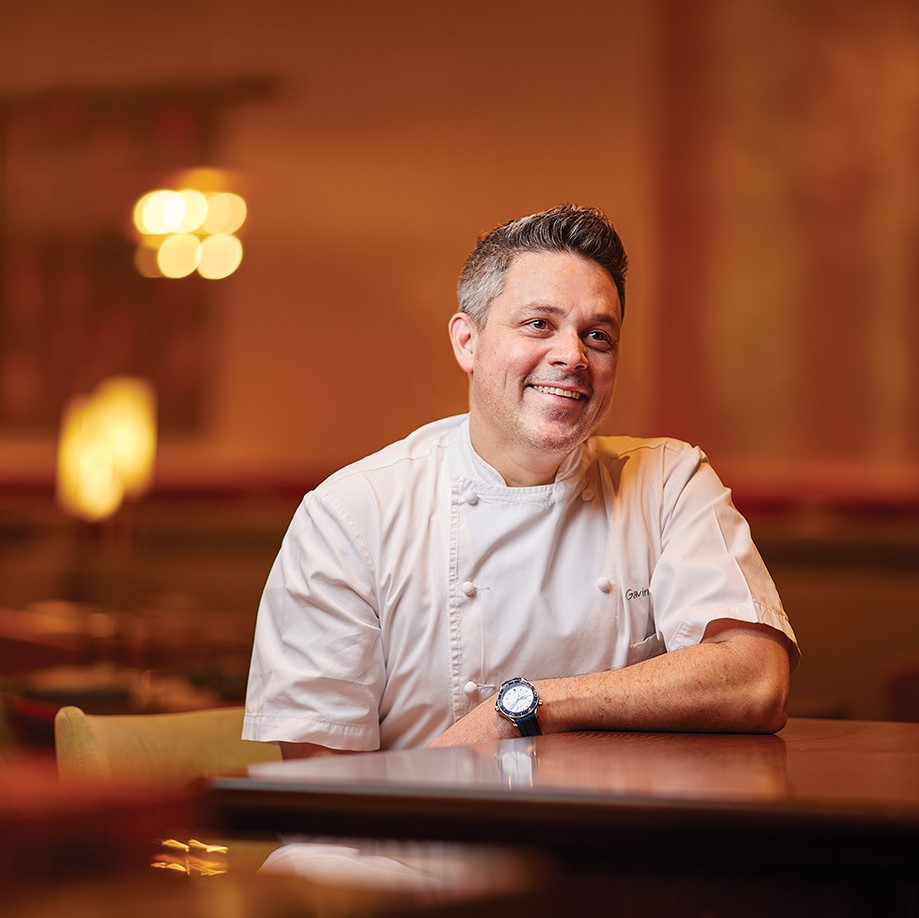
Kaysen recalls the handful of times he went to the French Alps, to the family home of a co-worker. He says he would enjoy lunches with his co-worker’s family that lasted all afternoon. “Literally, we [would] eat lunch for six hours,” he says. “And it was just so beautiful to see that mentality of stopping what you’re doing and allowing yourself to just be with each other, right? It’s quite beautiful.”
But it’s also something he experienced among his own team at the restaurant. At the end of their afternoon break, the whole staff sat down for a meal before dinner service began, encouraged to sit together and take their time.
After his six-month internship ended, Kaysen went to London, where he briefly worked for a chef who was then a rising star in the culinary world: Gordon Ramsey (heard of him?), followed by about six months at L’Escargot in London’s Soho neighborhood. Upon returning to the states, Kaysen and his wife moved to San Diego; he landed a job as a line cook at El Bizcocho at Rancho Bernardo Inn. After a year, he became the chef de cuisine.
In that role, Kaysen brought that value of gathering around a table to his cooking staff. “I [had] my crew of cooks; there were six of us, and, you know, we all had the same kind of goal, which was, ‘Let’s just be the best we can be. Let’s be super creative, and let’s have fun.’ We would eat dinner every day together, because that’s what we did in all my restaurants in Europe,” he says. “We would sit down for 30 to 45 minutes, and we would sit at a table and we’d eat. And everybody was like, ‘You guys can’t take that much time.’ But it was like, ‘No, we can. We will.’ It was great. And I look back now, and all those cooks that I cooked with, they’re all so successful.”
Being in San Diego, the gathering they did wasn’t always around a table, however. Sometimes, it was on the beach. “I would print the [day’s] schedule, and then I would print the surf report under the schedule. Because if the surf is good in San Diego, you [have] to go surfing,” Kaysen says. “If the swell is good, you … stop what you’re doing and hit the waves for an hour.”
If the swell was going to be good in the middle of a prep shift, well, they’d all get in a little earlier to prep “and then we’d all leave and go to the beach and surf for an hour, and we’d come back and finish prepping to get ready for dinner service,” Kaysen says, noting how that helped build camaraderie among his team and “gave us so much freedom to not be too stressed about what it is we do … It was a really good lesson—don’t forget to have fun.”
Since then, Kaysen has had a multitude of amazing experiences. He competed in the Bocuse d’Or international culinary competition (what he likens to the Olympics for the culinary world) in 2007 and now serves as president for Team USA. He won a James Beard Foundation Award for Rising Star Chef of the Year 2008; in 2018, he received the James Beard award for Best Chef: Midwest; and he was a semifinalist for Outsanding Chef 2020. He worked for eight years at Café Boulud in New York City under chef Daniel Boulud, as the executive chef and director of culinary operations. And, of course, there are his own restaurants. He opened Spoon and Stable in 2014, Bellecour in 2017, Demi in 2019, Bellecour Bakery at Cooks of Crocus Hill in 2020, and Mara and Socca Cafe at the Four Seasons Hotel Minneapolis in 2022.
But through all this—the press, the awards, the fame, the success—what is still at the heart of so much of what Kaysen does is facilitating people gathering together. In fact, this idea was central in his concept for Mara, a restaurant whose menu is inspired by the 22 countries that touch the Mediterranean Sea. (“The term I hate more than anything: ‘the concept,’” he says.)
“I journal a lot … Mara comes from a lot of my journaling,” Kaysen says. When working on the restaurant concept, he says, “I just started to read through my journals [from my time in Europe], and it was kind of inspiring to see how a 21-year-old kid would take a train from somewhere in Switzerland down to Nice, France, and be in the Mediterranean Sea and get inspired by … these garbanzo beans and hummus and pita and all of this food. And what I kept going back to in my journal was I kept writing about how these people were all together as a group and how it was this gathering. And I kept using the word gathering a lot. So I thought to myself, ‘Well, maybe we should build a Mediterranean restaurant that has that sense of gathering and that sense of place.’” Mara was born out of that idea.
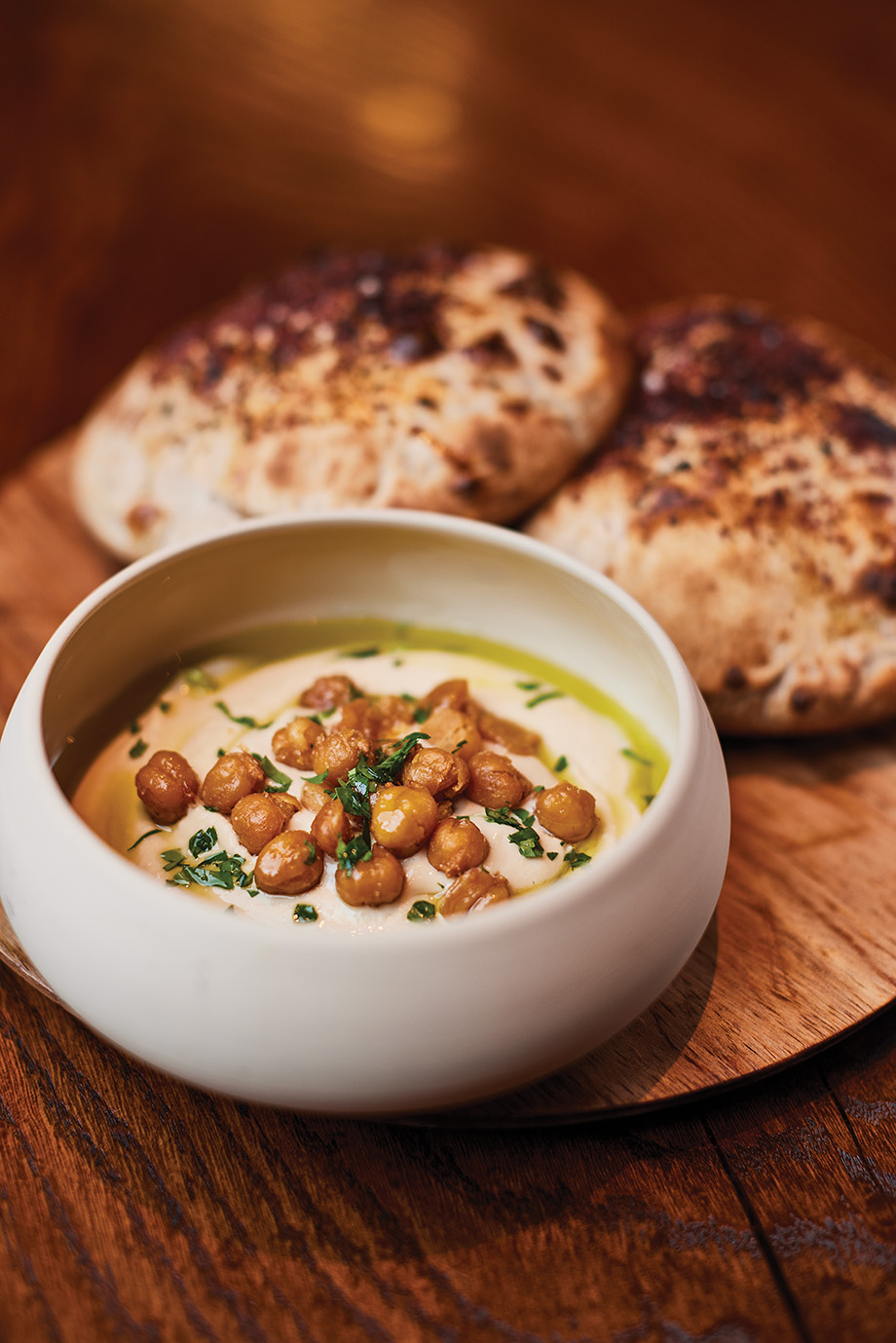
Hummus, Crispy Chickpeas, Tehina, Pita
Part of creating a space for gathering was designing it with an open kitchen, where cooks and guests could see each other and interact. “The reason I love the open kitchen is because it gives the team an opportunity to see what it is that they’re doing,” Kaysen says. “When you have an open kitchen, you see somebody eating here, and their expression is like, ‘Oh, my gosh, this is so good.’ And [the cooks] see that. [They’re] like … that’s amazing. Look what I’m doing, I’m making people happy. And you’re filling their bucket, and that’s super cool.”
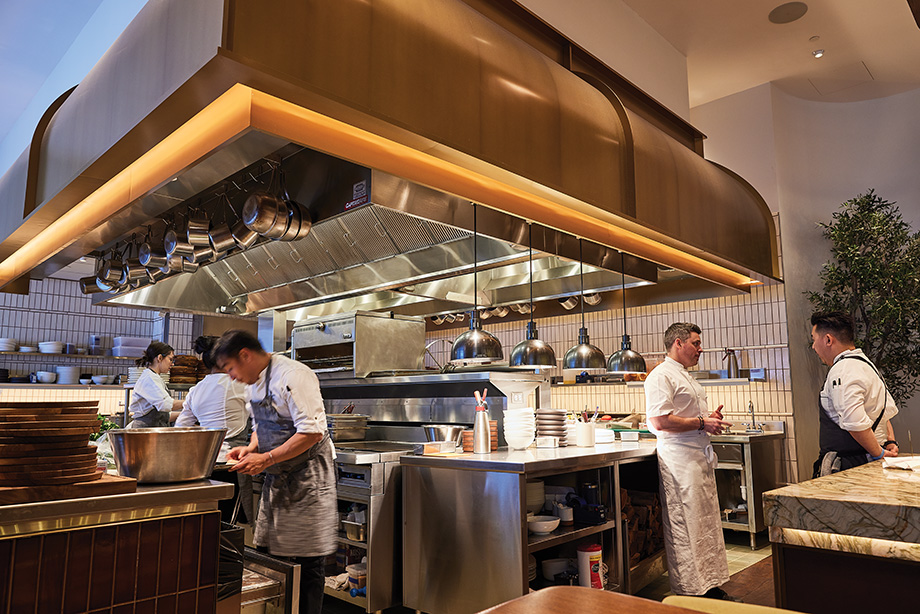
The open kitchen space in Mara.
The dining room is also designed in a way that promotes connection, whether with one other person or 10. While that sense of gathering is baked into the DNA at Mara, it’s truly something Kaysen has aimed to create in all his restaurants. This desire goes even further back than the culture he experienced while in Europe. It goes back to the joy he found in his grandmother’s kitchen, when the food she cooked brought the family together. And witnessing this continues to bring him joy.
“I get to watch families and people come together every night in all of my restaurants, and I love to watch that experience, because it doesn’t matter what the conversation is at the table, it just matters that they’re there together,” Kaysen says. “The word restaurant comes from the word restoration … The idea of restoration is really what dining out should feel like. Do you go out to eat and then leave and feel as though you’ve been restored through that experience?”

Birch Smoked Hiramasa Crudo Charred Grapefruit, Fresno Chilies, Radish, Cilantro Oil

Chermoula Spiced Chicken, Pomegranate, Sumac Spring Onions, Charred Lemon
A Slice of France in Edina
Mara isn’t Kaysen’s only restaurant that’s influenced by his time in Europe. Bellecour at Cooks of Crocus Hill—and the full restaurant in Wayzata before that—was deeply inspired by France. The bakery serves an array of French bistro-inspired pastries, desserts and sandwiches with locations at the Cooks of Crocus Hill shops in St. Paul and in the North Loop of Minneapolis—and, most recently, Edina.
Bellecour was named after Place Bellecour, a town square at the center of Lyon, France, in honor of Paul Bocuse, Kaysen’s mentor and friend. Bocuse was the chef behind the three-star Michelin restaurant L’Auberge du Pont de Collonges and the founder of the Bocuse d’Or competition. Kaysen first met Bocuse as a competitor; from there, they developed and maintained a friendship that lasted until Bocuse’s death in 2018.
“He was like our pope of cooking,” Kaysen says. “He was an incredible human being and such an amazing influence. When I went to Lyon, France, many times, I would always have dinner with Mr. Bocuse in his restaurant.”
Bocuse was an instrumental mentor and friend to Kaysen; so, when developing Bellecour, he knew he wanted to honor his friend by naming it for him. Part of that was a nod to Bocuse’s own personal history.
“Mr. Bocuse taught me so much about French cooking, and he trained Daniel Boulud, who taught me everything about French cooking and the hospitality of how the French take that on,” Kaysen says. “And when Mr. Bocuse was in World War II, he was shot and he was left to be dead in a field. And an American soldier came by and found him, picked him up and brought him to a hospital, and they gave him a blood transfusion, and they saved his life. When you eat at [Mr. Bocuse’s] restaurant, there’s an American flag that flies in front of it. And when I asked him why that flag was there, he says, ‘I never want to forget why I’m here, and it’s the Americans who saved my life.’ So we name it Bellecour and honor Mr. Bocuse for helping teach us how to cook.”
Gavin’s Kitchen and Pantry Essentials
What are your top three to five kitchen tools that you can’t live without?
“A good knife. Spoon. Mortar and pestle … good pots and pans. I know that’s more than one, but, like, you need good pots and pans. … I love All Clad. And I also like cast iron. And I’ve got some great cast iron pants too.”
What are three to five things you always have on hand for on the fly cooking?
“You have to have good vinegars. Not just your traditional white wine and red wine vinegar. Like, actually have vinegar, like Banyuls and sherry and good stuff. I always have pickled onions in my fridge. I always have preserved lemons in my fridge. I always have anchovies in my fridge. Between those three things, I can pretty much make anything.”
What’s your favorite meal to eat? And what’s your favorite meal to cook?
“It’s probably the same. It’s a recipe, actually, in our book. It’s spatchcocked chicken. Roasted chicken is my favorite. So we do this, like, North African rub spiced chicken, and then we spatchcock it. So you just split the backbone off and split in half and bake it 45 minutes in the oven at 425 and it’s perfect. I love that dish.”

